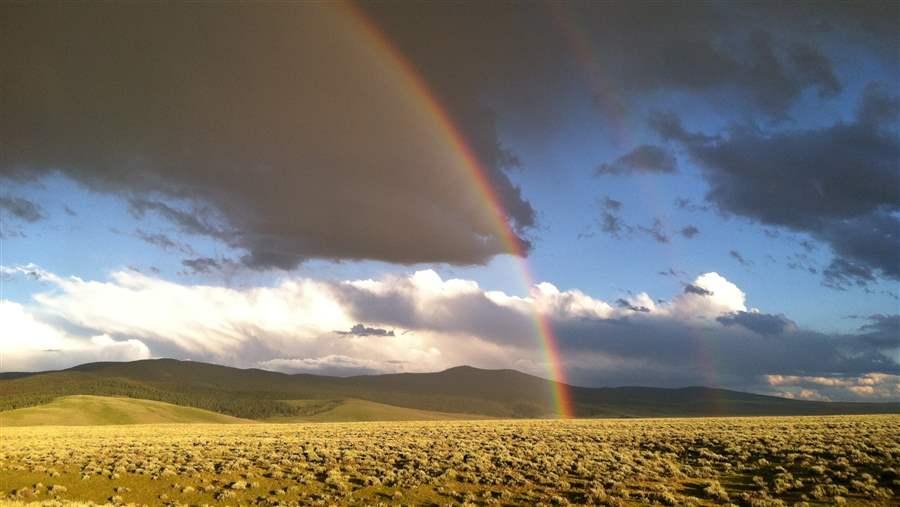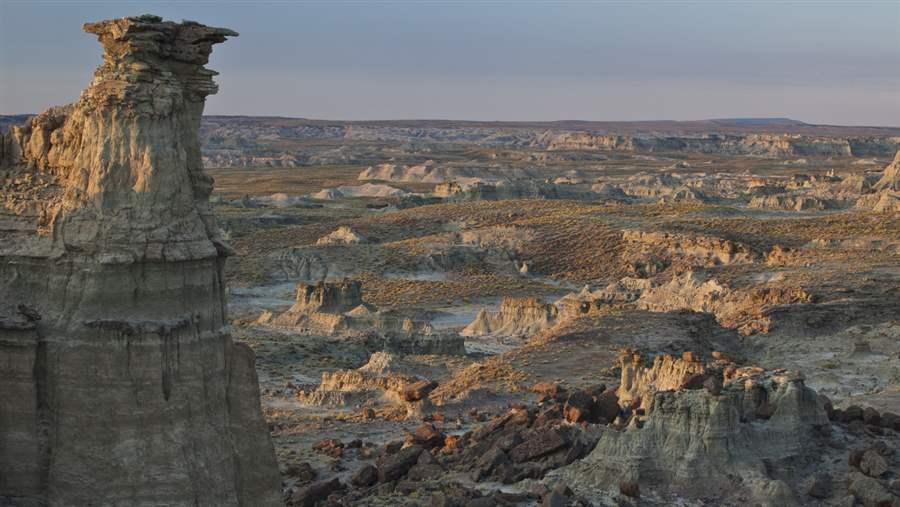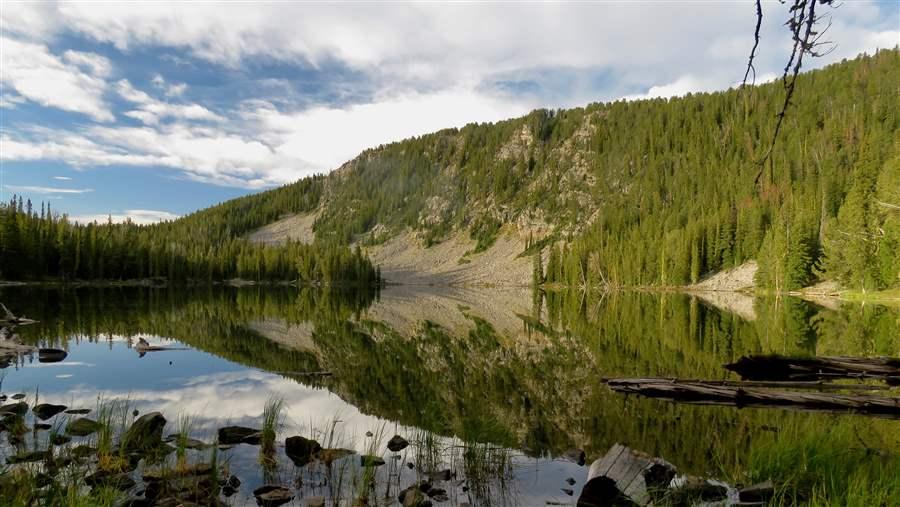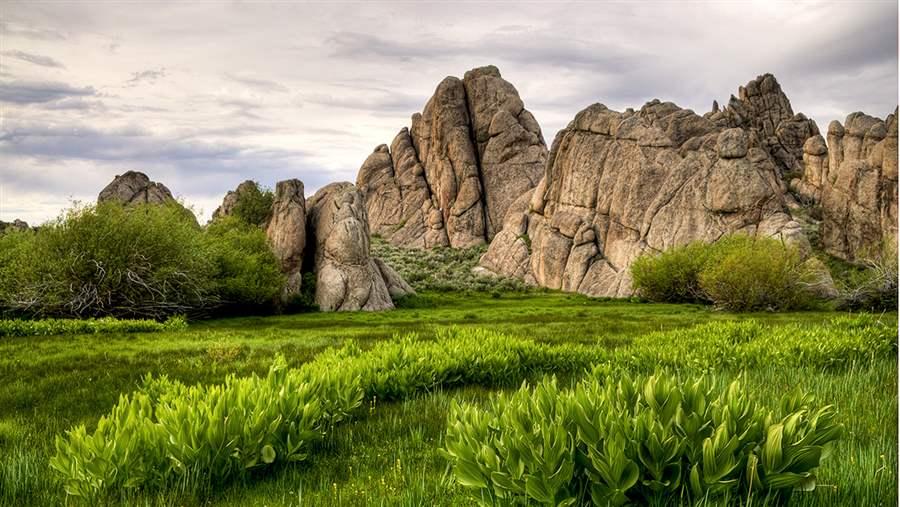Local Input Must Guide Congress on Wilderness Study Areas
Unilateral decision-making threatens conservation value of public lands

The West Pioneer Wilderness Study Area, seen here from the sagebrush steppe of the Bighole Valley, is the largest remaining roadless area in southwest Montana.
Bob AmbroseEven though they don’t appear on most maps, Wilderness Study Areas (WSA) contain some of America’s most extraordinary public lands. These are places Congress, the Bureau of Land Management, or the U.S. Forest Service has determined possess wilderness qualities—natural and undeveloped, with outstanding opportunities for solitude. WSAs are managed to preserve those characteristics until Congress decides whether to designate them as a part of the National Wilderness Preservation System. In some cases, lawmakers grant that status to part of a WSA and recommend other types of protections—or none at all—for the rest. Now, however, the entire concept of these areas is under threat.
Several bills pending in Congress attempt to eliminate WSAs by dealing only with one side of that equation. These measures would release entire areas from their protected status, opening them to development with no consideration of protecting the places within those boundaries that warrant conservation. Such a determination ignores the importance of wildlife habitat, water quality, and quiet outdoor recreation.
Three bills target Montana’s public lands; S. 2206, sponsored by Senator Steve Daines (R-MT), and its companion in the House, H.R. 5148, would remove protection for 449,500 acres in five WSAs on land managed by the U.S. Forest Service. H.R. 5149, sponsored by Representative Greg Gianforte (R-MT), would release 24 areas managed by the Bureau of Land Management (BLM).

Dramatic rock spires tower over the Adobe Town WSA in southwest Wyoming’s Sweetwater County. The county commission voted to forgo an established public input process and allow the release of all the county’s WSAs through national legislation.
Bob WickWyoming Representative Liz Cheney (R) has announced plans to introduce legislation before August to address the status of Wilderness Study Areas in her state. Eight Wyoming counties are engaged in an open process called the Wyoming Public Lands Initiative, which brings together a range of stakeholders to reach agreement about how to manage public lands, including WSAs. Participants and observers have stated the prospect of WSA release legislation undermines local discussions.

The West Pioneer WSA, in southwestern Montana, is made up of 147,000 acres of rolling hills and forest land, including Stone Lake, seen here.
Sally CarlsonAll interested stakeholders, and especially local communities, should have the opportunity to work with members of Congress to inform land-management policy. There is a long history in Montana of this more-complete approach to planning for WSAs. For example, the Lee Metcalf Wilderness and Management Act of 1983 addressed two WSAs, releasing one entirely while partially releasing the other and designating approximately 259,000 acres of wilderness.
More recently, the Forest Jobs and Recreation Act, introduced in 2009, 2011, and 2013, sought to honor the public interest across Beaverhead-Deerlodge and Kootenai national forests, both in Montana, by protecting parts of the Sapphire and West Pioneer WSAs and allowing varied uses in other areas. Both bills represented compromises that reflected the input and interests of local communities and a good-faith attempt to balance the interests of all public lands users.

The agreement that created the 26,000-acre Pine Forest Range Wilderness in Nevada also directed the Bureau of Land Management to exchange public land surrounding nearby ranches for private parcels within WSAs, benefiting ranchers and land managers.
Brian BeffortNevada, likewise, has a long tradition of drafting legislation, with community input, that balances conservation and development. The Pine Forest Range Wilderness in northern Nevada combines parts of two former wilderness study areas, Blue Lakes and Alder Creek. The impetus to protect the area came from a working group representing a diverse range of public land users, including livestock grazing permittees, private landowners, sportsmen, off-road vehicle enthusiasts, federal, state, and local government officials, and wilderness advocates. The group suggested boundaries that protected an incredible resource, while also releasing some of the WSA acres for ranching, water users, and motorized recreational activities. The result was bipartisan legislation sponsored by Representatives Mark Amodei (R-NV) and Steven Horsford (D-NV) that became law in 2014.
These examples show that fair public land policies start with conversations among stakeholders, not members of Congress acting unilaterally.
The Pew Charitable Trusts welcomes broad-based stakeholder-driven discussions regarding Wilderness Study Areas—like those outlined in the Wyoming Public Lands Initiative—that feature conservation as a key part of a larger vision. Legislation that eliminates WSA protections without also addressing the need to conserve wild places is simply one-sided. We look forward to working with state partners and lawmakers to solve public land management challenges by finding a sensible balance that will meet the needs of all stakeholders, including the generations who will come after us.
John Gilroy directs The Pew Charitable Trusts’ U.S. public lands program.












